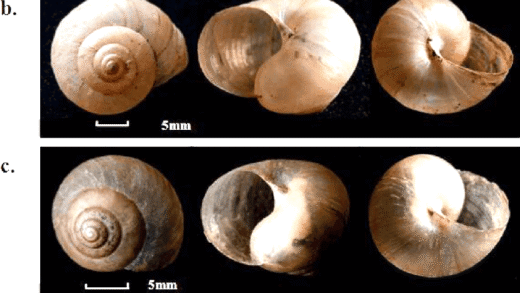White smoke from exhaust often indicates serious vehicle issues, typically involving coolant burning. Identifying symptoms, understanding potential costs of repairs, and knowing when to seek professional help are critical for maintaining vehicle health. A blown head gasket is a common cause of white smoke and requires immediate attention to prevent extensive damage.
Causes of White Smoke: Understanding What You’re Seeing
White smoke from exhaust is often a sign of serious issues with your vehicle. It usually indicates that coolant is entering the combustion chamber. This can occur due to several reasons:
- Blown Head Gasket: A common culprit, a blown head gasket can allow coolant to leak into the engine cylinders, resulting in white smoke.
- Cracked Engine Block: If the engine block is cracked, it may allow coolant to escape and mix with engine oil or fuel.
- Damaged Cylinder Head: Similar to a blown head gasket, a damaged cylinder head can cause coolant leaks.
- Faulty Fuel Injector: In some cases, a malfunctioning fuel injector can create excessive fuel and lead to white smoke.
Identifying the cause of white smoke is crucial for diagnosing the health of your vehicle. If you notice persistent white smoke, it’s advisable to have your vehicle checked immediately to avoid further damage.
Symptoms of Coolant Burning: How to Spot the Signs
When your vehicle produces white smoke, it often means coolant is burning. Here are some specific indicators to look for:
- Sweet Smell: The presence of a sweet smell can indicate that coolant is burning.
- Overheating Engine: If the engine is running hotter than normal, it may be a sign of coolant loss.
- Low Coolant Levels: Regularly checking the coolant reservoir can help you spot unusual drops in coolant levels.
- White Residue: Look for white residue around the exhaust pipe, which can indicate coolant combustion.
Recognizing these symptoms early can help prevent more severe damage and costly repairs.
Common Issues That Cause White Smoke: More Than Just Coolant
While coolant burning is a primary reason for white smoke, other mechanical problems can also contribute. Consider the following:
- Oil Leaks: If oil leaks into the combustion chamber, it can cause smoke that appears white.
- Fuel Issues: Incorrect fuel mixtures can lead to poor combustion, resulting in white smoke.
- Engine Wear: Worn piston rings or valve seals can allow oil to enter the combustion area.
It’s essential to look beyond coolant issues when diagnosing white smoke. A thorough inspection can help pinpoint the exact cause and prevent costly repairs in the future.
Is It Serious? Evaluating the Risks of White Smoke
White smoke from exhaust can be a critical warning sign for vehicle owners. Ignoring this symptom may lead to severe engine damage. Here’s what you should consider:
- Potential Engine Damage: Continuous white smoke typically indicates coolant entering the combustion chamber, which can cause overheating and further damage.
- Driving Safety: White smoke can reduce engine performance, leading to potential safety risks while driving.
- Costly Repairs: Delaying attention to white smoke may result in more extensive and expensive repairs down the line.
Recognizing the seriousness of white smoke is essential for maintaining vehicle health. If you notice white smoke, it’s best to address the issue promptly to avoid escalating problems.
Diagnosing the Problem: Steps to Take Before Visiting a Mechanic
Diagnosing the cause of white smoke from exhaust is crucial before seeking professional help. Here are some steps to follow:
- Check Coolant Levels: Inspect the coolant reservoir for low levels, which could indicate a leak.
- Look for Sweet Smell: A sweet odor from the exhaust can signal burning coolant.
- Monitor Engine Temperature: Keep an eye on the engine temperature gauge; overheating may suggest coolant loss.
- Inspect for Residue: Check for white residue around the exhaust pipe that indicates coolant burning.
By conducting these checks, you can gather valuable information to share with your mechanic, facilitating a more accurate diagnosis.
Potential Fixes: What Can Be Done About White Smoke?
Addressing white smoke from exhaust involves various potential fixes depending on the underlying issue. Here are some common solutions:
- Head Gasket Replacement: If a blown head gasket is the issue, replacing it is often necessary to stop coolant leaks.
- Engine Block Repair: For cracks in the engine block, welding or replacement may be required.
- Fuel Injector Service: Cleaning or replacing faulty fuel injectors can prevent excessive fuel from causing smoke.
- Regular Maintenance: Keeping up with regular vehicle maintenance can help prevent issues that lead to white smoke.
These solutions can significantly reduce or eliminate white smoke, restoring your vehicle’s performance and safety.
Cost of Repairs: Budgeting for White Smoke Issues
White smoke from exhaust can lead to significant repair costs depending on the underlying issue. Understanding these costs can help you budget accordingly:
- Blown Head Gasket Replacement: This is one of the most expensive repairs, often costing between $1,000 and $2,500, depending on the vehicle make and model.
- Engine Block Repair: If the engine block is cracked, repairs can range from $500 to over $1,500, or even more if a complete replacement is necessary.
- Cylinder Head Repair: Repairing or replacing a damaged cylinder head can cost between $1,000 and $2,000.
- Fuel Injector Replacement: If fuel injectors are faulty, replacing them typically costs around $300 to $600.
Regular maintenance can prevent many issues that lead to white smoke. Setting aside a repair budget is wise, as it can save you from unexpected financial strain if significant repairs are needed.
When to Seek Professional Help: Knowing the Right Time
White smoke from exhaust is not something to ignore. Knowing when to seek professional help can save you from further damage:
- Persistent White Smoke: If white smoke continues for more than a few minutes, it’s time to consult a mechanic.
- Strong Sweet Smell: If you notice a sweet odor accompanying the smoke, this indicates burning coolant, requiring immediate attention.
- Engine Overheating: If the engine temperature rises significantly, seek help to avoid severe damage.
- Unusual Engine Noises: Any knocking or strange noises should prompt a visit to the mechanic.
Early intervention is key to preventing more extensive damage and costly repairs. Don’t hesitate to seek professional advice if you’re unsure.
Blown Head Gasket Indicators: Can White Smoke Signal This Issue?
White smoke can indeed be a sign of a blown head gasket, a serious issue. Here’s what to look for:
- Continuous White Smoke: If the smoke persists, it often indicates coolant leaking into the combustion chamber.
- Coolant Loss: Frequent topping off of coolant levels may suggest a blown head gasket.
- Engine Overheating: A blown head gasket can lead to overheating due to coolant loss, making it vital to monitor engine temperature.
- Oil Contamination: If the oil appears milky or frothy, this could be a sign that coolant is mixing with the oil, indicative of a blown head gasket.
Recognizing these indicators early can help you address the problem before it escalates into a more severe engine failure.





Comments are closed.